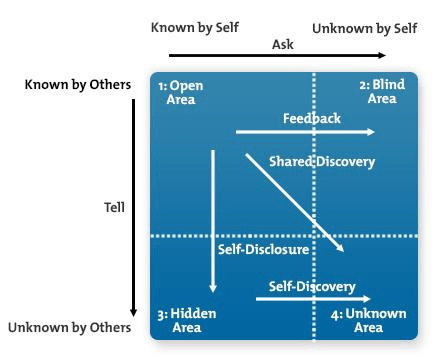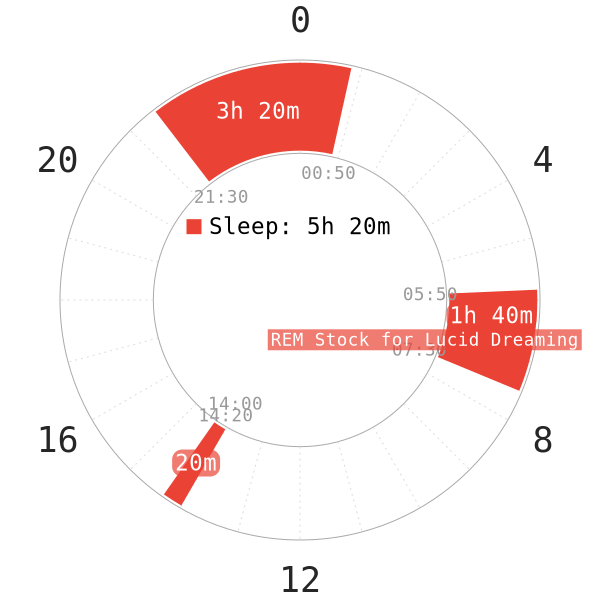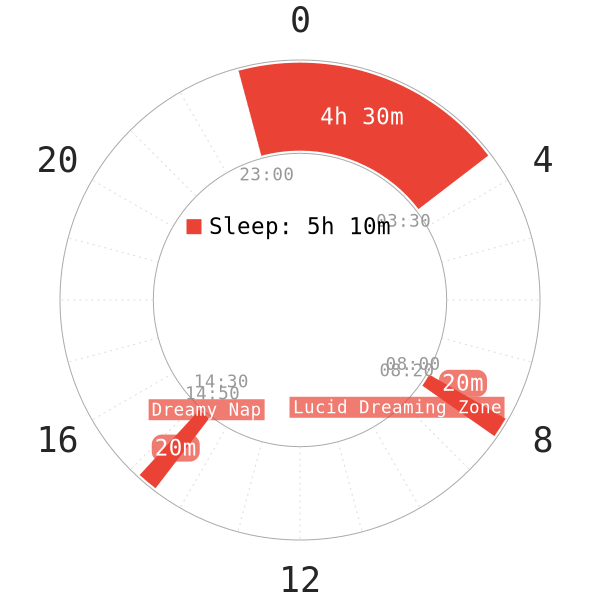Introduction
People have used polyphasic sleep as introductory method to lucid dream and enhance their prior skills. Because of predictable REM sleep in naps and cores, some have been able to become lucid dreamers even without any prior experience of lucid dreams! This article talks about what lucid dreaming is, its benefits, how it can work with polyphasic sleep and how to start practicing it!
Content
- Definition
- Benefits
- Disadvantages
- Lucid Dreaming and Polyphasic Sleep Principles
- Online Communities and Resources on Lucid Dreaming
- Methods to Lucid Dream
What is Lucid Dreaming?
Lucid dreaming is being aware that one is dreaming during a dream. It is about controlling dreams and remembering dreams. Lucid dreaming also requires another skill: being aware that one is dreaming. It is a core factor in controlling the dream to personal will.
Tibetan Buddhism and few Western philosophers have cultivated this awareness for the interesting world of lucid dreaming; however, it has been scientifically verified that lucid dreaming exists during the 20th and 21st century.
Benefits of Lucid Dreaming
Controlling dreams seems like an impossible yet desirable quest. This is because dreams are not restricted to the laws of physics and societal norms. Thus, one can do many activities during dreams that would be impossible in their waking life otherwise. Examples include, but not limited to, having sex with a celebrity, flying without following aerodynamic laws, practicing a sport for preparation, and dealing with nightmares. Such achievable and grand promises sound weird in modern society because we can achieve such experiences with digital means.
However, there are many psychological and economic benefits to lucid dreaming.
Sleeping does not have to pause your life
- If one of the primary goals of polyphasic sleeping is optimal time management, then lucid dreaming shares that goal.
- Imagine that after one is aware of being in a dream. They can then prepare for a speech for the following day.
- When the body rests, the mind can play and work. Thus, lucid dreaming can even allow a person to optimize that time.
Stress reduction
Lucid dreaming can reduce stress by controlling dreams.
- In stress management, having a sense of control correlates with low-level of stress. If lucid dreaming induces the sense of control, lucid dreaming may also be able to reduce stress.
- In fact, polyphasic sleeping may help reduce stress since it helps with time management. Not having enough time brings stress to people, so polyphasic sleeping helps people reduce stress by managing time.
- Since both lucid dreaming and polyphasic sleeping reduce stress, it would be wise to include them as tools for stress management. During adaptation, polyphasic sleep will however increase stress but only temporarily.
Self-discovery while sleeping
Lucid dreaming is all about exploring personal psyche by using the subconscious to produce wonderful experiences.
The Johari Window below is a theoretical model that represents the knowledge of self in relation to how the person and other people know the self. It can be used in conjecture with lucid dreaming; everyone has an unknown area, a zone where potentiality and authentic self lies within. Therefore, lucid dreaming is a good tool to discover personal unknown area.

Disadvantages
While lucid dreaming offers many benefits, there are other factors to consider.
Increase condition of dissociation and schizotypy symptoms
The hallmark of lucid dreaming is testing between reality and dreaming. Dreams feel like waking life and a person practicing lucid dreaming must know if they are dreaming or awake.
For people with schizophrenia, multiple realities are in conflict. Fortunately, there are methods to test if one is in a dream and a mindset that accepts multiple realities.
No immediate results
Lucid dreaming offers grand promises and people expect to have immediate results. However, even after spending hours on researching, one may be disappointed to experience no lucid dreams in the first month.
It requires great patience and practice in order to achieve consistent rates of lucid dreaming.
How can I apply lucid dreaming to polyphasic sleep?
The relationship between polyphasic sleeping and lucid dreaming is still under exploration. The optimal combination of the two is still in progress of development. However, the general rule of thumb is that REM sleep entails dreams and dreams entail opportunity for lucid dreaming.
Many lucid dreaming techniques, such as the Wake Back To Bed (WBTB) method, rely on nocturnal awakening and then returning to sleep when you are already groggy. This is one reason why a polyphasic sleep schedule seems to help some people achieve lucidity. Some elements of polyphasic sleeping will assist lucid dreaming, such as:
Allocating REM sleep

The hallmark of polyphasic sleeping is being aware of sleep mechanics. One can have a sleep schedule that places REM sleep in predictable zones. Zones that enable high-level lucid dreaming include the REM peak hours, and daytime hours. This may boost duration, vividness, control, and experience of a lucid dream.
Using naps for lucid dreaming

Naps can go well with lucid dreaming if a person recalls dreams from their naps. Additionally, SOREM in naps also enhances many lucid dreaming techniques such as the Wake Induced Lucid Dreaming method.
Lucid dreaming offers extra rewards for sticking with the schedule to reach SOREM.
A Schedule Dedicated for Lucid Dreaming
Historically, manipulating personal sleep schedule, the core of polyphasic sleeping, helps with lucid dreaming. This form of polyphasic sleeping has its historical roots in Stephen LaBerge’s Exploring the World of Lucid Dreaming (1990). The whole notion roots in the passage “How to Schedule Your Efforts for Best Results”. The schedule is Wake Back to Bed, or WBTB, and it is capable of increasing the chance for lucid dreams.
Many people have been able to become lucid regularly simply from getting REM in their naps with no prior experience. This means that polyphasic sleep is potentially a groundwork for lucid dreaming. When choosing a polyphasic sleep schedule with the purpose of improving lucid dreaming skills, certain key points are worth paying attention to.
The Polyphasic Survey
In the Polysurvey 2018, most REM naps occur in the morning and less so during the afternoon. Because of that, different schedules make more sense to attempt than others.
- Due to the unpredictable sleep architecture on nap-only schedules, it is better to avoid these as long-term schedules for the lucid dreaming benefits. For short-term benefits, Uberman and Naptation can work; however, after a while, SWS naps are going to become more and more prevalent. This would then replace REM naps and remove most of the lucid dreaming benefits. Furthermore, there are also reports of reduced dream recall on nap-only schedules.
- Dual Core and Tri Core schedules are great options.
- They have a whole core in the REM peak. This is except Dual Core 3 and 4, but they have several naps in the REM-heavy area instead.
- Several people have noted that they achieved very long, intense dreams in the REM cores on these schedules.
- With the Everyman schedules, the best options will most likely be Everyman 2, with 1 nap in the REM-heavy area.
- Otherwise, Everyman 3-extended, with 2 naps in the REM-heavy area can also work. Everyman 3 can have 2 naps in the REM-heavy area.
- Lastly, Everyman 4-extended may have 3 naps in the REM-heavy area.
- Each nap in the REM-heavy area has a great potential for containing REM sleep.
- The best Biphasic schedule would be Segmented. It has one core located in the REM-heavy area.
- The other Biphasic schedules, Everyman 1 and Siesta are less likely to give lucid dreaming benefits; they have no sleeps placed in the REM-heavy area. Still, around half of all people manage to get REM on the E1 nap.
- Nevertheless, that heavily depends on the placement of the nap. The later the nap, the lower the chance for consistent REM sleep.
To figure out which schedule is best for your life, you should reach out to experienced people who can help you design schedules.
I have chosen to try lucid dreaming. What now?
Do not to spend money when beginning lucid dreaming. There are online sources that give free information on lucid dreaming. That said, there are a lot of methods to inducing lucid dreams, so it is easy to get overwhelmed. The best advice for all methods is to remain persistent and consistent with a particular method. Always include reality checks to every method.
- Polyphasic Sleep Discord: In the Polyphasic Sleep Discord, there is a dedicated chat, #dreaming that contains links to essential information on lucid dreaming.
- Dreamviews: Dreamviews is a lucid dreaming community that has articles and threads on various lucid dreaming techniques and factors.
- Lucid dreaming Wikibook: A Wikibook with good information on the subject.
- Lucid Realm: Lucid Realm is a Discord server dedicated to lucid dreaming. They provide live communication in case anyone has questions.
- /r/luciddreaming: This is mainly for sharing anecdotal experiences.
- Exploring the World of Lucid Dreaming by Stephan LaBerge: If you want to purchase a book on lucid dreaming, there is no better book than this. Stephan LaBerge is the scientist that verified the scientific existence of lucid dreaming. In addition, he provides a solid and scientific ground for lucid dreaming in this book. LaBerge’s newer book, Lucid Dreaming: A Concise Guide to Awakening in Your Dreams and in Your Life, truncates a lot of material in Exploring the World of Lucid Dreaming. Thus, the newer book does not provide any exercises compared to his former book.
Available resources in #dreaming pins on the Discord:
- Exploring the World of Lucid Dreaming by Stephan LaBerge
- A Course in Lucid Dreaming
- Advanced Lucid Dreaming: The Power of Supplements
That’s great and all, but how do I really get started?
Common Lucid Dreaming recommendations are: get dream journal, do reality checks and implement an induction technique. The following points are less popular, but they offer additional guidance on your progress:
Start recognizing dreams
- When starting a dream journal, check off when you recognize at least one dream after waking up.
- Next, tick the achievement for 1 dream a day.
- If this process stagnates, auto-suggestion is a possible method. Tell yourself that you will recall dreams before going to sleep.
- Record in the dream journal after waking up from a sleep. This does not matter if you remember the dream or not.
- This introspection allows the assertion of the number of dreams you have. If there are no dreams, there will be no lucid dreams.
Rehearse going to sleep and waking up
Lucid dreaming demands good habit formation and maintenance skills. Not being able to write down in a dream journal other than simply “I can’t” can degrade lucid dreaming capabilities. To prevent this, do two things when going to sleep:
- Tell yourself that you WILL recall a dream or get a lucid dream, and
- Remind yourself that you WILL write down the dream in the dream journal.
For both, visualize having a dream and writing it down in the journal.
Start doing reality checks
Reality checks enable the person to test if they are in a dream, both the waking life and the dreaming life. In fact, practicing reality checks in the waking life transfers to dreaming life if done consistently.
- Choose 2 reality checks from the internet that fit you.
- Do them at least once per hour.
- For both, visualize yourself actually doing the reality checks. For example, if you are pushing your finger through your palm, do it physically and visualize it happening. Do not mind the fact that the laws of physics do not allow it to happen.
- Use this link to get familiar with reality check.
Have a reality check tally
Create a physical reminder that records the progress. This is essential to remember doing them and improving.
Get familiar with induction techniques
The two primary induction techniques that all other induction techniques expand from are Mnemonically Induced Lucid Dream (MILD) and Wake Induced Lucid Dream (WILD). Get familiar with them.
However, you should not use the WILD technique in sleep sessions that comprise of mostly SWS.
Use Excel
Excel or Google Spreadsheet can record all the reality check tallies in a month after you make some progress. It can also record how many dreams and lucid dreams have occurred in that month. Data collection is one of the best ways to keep track of progress, as is the case with polyphasic sleeping.
Conclusion
These six points set the foundations for lucid dreaming. Three things are obligatory: A dream journal, a reality check tally, and a data collection program like Excel. Visualization as a tool for habit formation and maintenance is also indispensable. Being able to be consistent with these six points will allow further developments in lucid dreaming.
However, having prior experience in lucid dreaming without using these six points from polyphasic sleeping is possible. If that is the case, these points can further enhance the polyphasic sleeping and lucid dream experiences altogether.
Main author: Neo Henry
Page last updated: 28 December 2020


Only a smiling visitant here to share the love (:, btw outstanding pattern. “Individuals may form communities, but it is institutions alone that can create a nation.” by Benjamin Disraeli.
Good day very nice site!! Man .. Excellent ..
Superb .. I will bookmark your blog and take the feeds additionally?
I am satisfied to seek out numerous helpful info here in the
submit, we want develop more techniques in this regard,
thank you for sharing. . . . . .